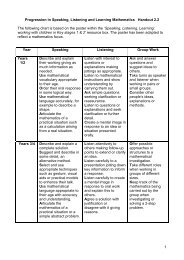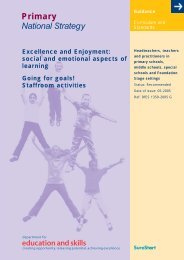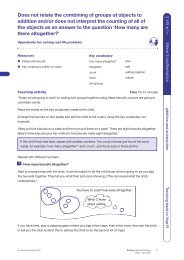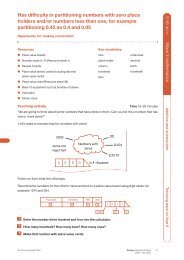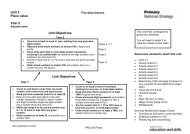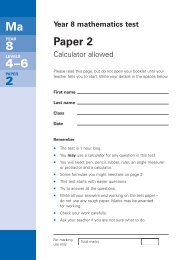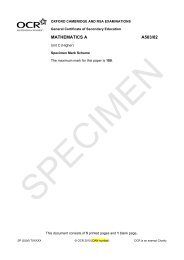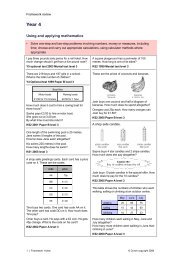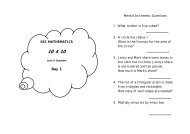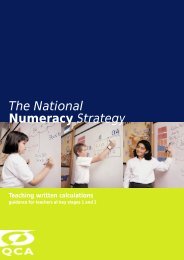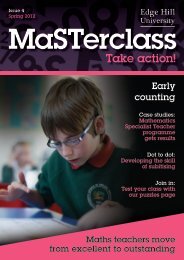Year 3 Block A: - Suffolk Learning
Year 3 Block A: - Suffolk Learning
Year 3 Block A: - Suffolk Learning
Create successful ePaper yourself
Turn your PDF publications into a flip-book with our unique Google optimized e-Paper software.
5 of 20 The National Strategies ⏐ Primary<strong>Year</strong> 3 <strong>Block</strong> A: Counting, partitioning and calculatingAssessment focus: Ma2, Numbers and the number systemAs they become familiar with two- and three-digit numbers, look for those children who canexplain the place value of each digit. Look for children who use different models of the numbersystem to represent numbers, for example, using arrow cards to represent numbers or locatingnumbers quickly on a number line. Look for children who, when given a number, know themultiples of ten between which it lies on the number line and which multiple is nearest. Look forchildren who know whether a two-digit number is closer to 0 or to 100.Children say and record numbers that are 1, 10 or 100 more than or less than any number to1000. They use their knowledge and counting strategies to add or subtract multiples of 10 or100. For example, they work out that 167 minus 30 is 137 by counting back in tens from 167(157, 147, 137), keeping track of the count by recording jumps on a number line. They answerone- and two-step word problems, such as: If you add two 20p coins to £1.35, how muchmoney is that altogether? They use notes and diagrams, including number lines, to supportand explain their methods.Children locate and position multiples of 10 or 100 on a number line and recognise the relativeposition of other numbers. They use their knowledge of place value to establish that 374 iscloser to 400 than 300 and closer to 370 than 380. They add or subtract mentally one-digitnumbers to or from two-digit numbers, bridging through a multiple of 10 where appropriate.For example, they calculate 72 – 8 by subtracting 2 to give 70 and then subtracting theremaining 6, using a number line to record the steps if necessary. Children use counting onwhen adding 5 to 36 or counting back when subtracting 5 from 39.Assessment focus: Ma1, ReasoningLook for children who identify patterns in results, for example:Look for children who use the patterns they identify to generate further calculations. As childrenexplain their results, identify the reasoning they use to decide if a particular example will appearlater in their list of calculations. Using the pattern above, for example, look for children who canpredict and explain which addition will give the first total greater than 50 or greater than 100.Children solve problems involving counting such as:How many 5p coins would be needed to pay for an item costing 37p?How many 3p and 4p stamps might we use for a 19p letter? And a 29p letter?They also solve number puzzles, such as:Complete each of these number sentences in as many different ways as possible:5 + 8 = 2 – 7 = .Children organise their written responses to problems and puzzles in a systematic way, forexample, in a list or table. This helps them to recognise and continue patterns, and to reasonthat all solutions have been found. They talk about their methods and compare solutions. Theyexplain how they organised their work to find all possibilities.00543-2008DOM-EN-11 © Crown copyright 2009



